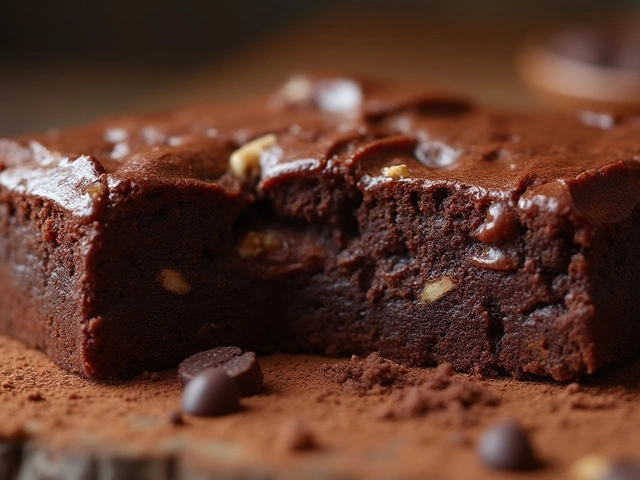
Not all cookie dough is ready to bake straight from the mixing bowl. If you’ve ever wondered why your cookies spread everywhere or end up way too flat, the answer could be as simple as the fridge. Chilling cookie dough is that step every impatient baker (and, let’s be real, most of us) wants to skip—but trust me, it’s worth it.
Refrigerating dough isn’t just about making the dough firmer. That chill time lets the flour soak up the liquids, which means cookies bake up thicker and with better texture. Tired of sad, greasy cookies? Chilling keeps the butter from melting too fast, so you don’t end up with little pancakes instead of perfect rounds.
- Why Cookie Dough Needs Chill Time
- How Long Is Enough? The Sweet Spot for Chilling
- Chill Time for Different Dough Types
- Shortcuts: When You're in a Hurry
- Mistakes to Dodge
- Make-Ahead and Storage Tips
Why Cookie Dough Needs Chill Time
If you’ve ever wondered why so many cookie recipes call for sticking your cookie dough in the fridge, there’s real science behind it. Chilling the dough changes a lot about how your cookies bake up—and we’re not just talking about making them easy to scoop.
When you refrigerate cookie dough, the flour gets time to fully absorb the wet ingredients. This makes your cookies thicker and gives them more structure, so they’re chewy instead of cakey or flat. The extra rest lets the flavors mellow out and even get stronger, so you don’t just taste raw flour or sugar.
- The butter or fat in the dough firms up, so your cookies don’t melt and spread too quickly when they hit the hot oven.
- Sugar in the dough soaks up more liquid, making cookies crispier around the edges but chewy inside—kind of the dream balance for most people.
- Chilling also makes it way easier to shape or scoop the dough if you want perfectly even cookies.
Here’s what happens when you skip the fridge: the butter melts too fast, the dough doesn’t hold its shape, and the cookies get thin or greasy. Big brands and bakeries almost always refrigerate their dough—even Toll House recommends it for a reason!
| Benefit | Why It's Good for Baking |
|---|---|
| Thicker cookies | Less spread, dough holds shape |
| Better texture | Chewy center, crisp edge |
| Stronger flavor | Tastes richer, less raw flour flavor |
Basically, the fridge does all the work while you wait. It’s a step that takes your homemade cookies from "meh" to "wow, these taste bakery-fresh."
How Long Is Enough? The Sweet Spot for Chilling
This is the real question: how long do you actually need to refrigerate cookie dough before baking? The magic number most bakers swear by is at least 30 minutes—any less, and you won’t see much difference. But if you’ve got the patience (or are binge-watching your favorite show), letting your cookie dough chill for 1 to 2 hours yields the best results for most recipes.
Now, if you want cookies with deeper flavor and a chewier center, aim for an overnight chill, around 8 to 24 hours. Sounds like a lot, but plenty of top bakers agree: longer chilling lets the sugar hydrate, making your cookies crisp on the edge and soft in the middle. Just don’t go overboard. After 72 hours, most doughs get too dry and crumbly.
Here’s a quick reference chart for cookie dough chill times:
| Chill Time | Result |
|---|---|
| 30 minutes - 1 hour | Firmer dough, slightly better texture |
| 2 hours | Noticeably thicker cookies, less spreading |
| 8-24 hours | Best flavor and texture; chewy, rich cookies |
| Over 72 hours | Dough may dry out; cookies can be crumbly |
So really, you don’t have to chill the dough forever. Even a short rest makes a big difference. Whenever possible, wrap the dough in plastic or seal it in an airtight container so it doesn’t dry out or pick up weird fridge smells—the last thing you want is garlic-flavored cookies because you forgot about that leftover pizza.
Chill Time for Different Dough Types
Let’s get real—there are so many kinds of homemade cookie dough, and not all of them need the same time in the fridge. Some need a quick cool down. Some need a serious overnight nap. Here’s what you really need to know about chilling times for different popular doughs.
- Classic chocolate chip: For that bakery-style chewy texture, aim for at least 1 hour in the fridge. If you want to level up, let it chill overnight (8-24 hours). This lets those flavors get deeper. If you’re in a rush, a 30-minute chill still helps but won’t give you the same thick, rich result.
- Sugar cookies: These really benefit from a good chill because the dough is soft and can get sticky. Two hours is kind of the sweet spot. It helps the cookies keep their shape when you cut them into fun designs.
- Shortbread: You need the butter cold here so these cookies don’t fall apart or turn to mush in the oven. Chill the dough for at least 30 minutes, but an hour is better if you have time to spare.
- Oatmeal cookie dough: These are hearty but can get gloopy if you skip the fridge. Give them at least 45 minutes; this lets the oats soak up moisture so the cookies turn out chewy and not dry.
- Peanut butter cookies: These tend to spread fast because of the fat. One hour in the fridge makes a difference and keeps their classic criss-cross pattern sharp.
Check out this quick cheat sheet to visualize the best times for each:
| Dough Type | Minimum Chill Time | Best Chill Time |
|---|---|---|
| Chocolate chip | 30 min | 8-24 hrs |
| Sugar cookie | 1 hr | 2 hrs |
| Shortbread | 30 min | 1 hr |
| Oatmeal | 45 min | 1-2 hrs |
| Peanut butter | 1 hr | 1-2 hrs |
If you can’t remember all these numbers, just know this: More chill usually means better cookie dough texture and flavor. If you want your cookies to stay thick and have all the flavor they should, don’t skimp here. Use the fridge as your best baking buddy.

Shortcuts: When You're in a Hurry
Sometimes you've got a craving for homemade cookies but zero patience for the clock. Good news—there are a couple of decent shortcuts when you need to get those cookie dough balls in the oven fast but still want an upgrade over straight-from-the-bowl baking.
- Freezer over fridge: If the recipe says chill for an hour in the fridge, you can usually cut it to 20–25 minutes in the freezer. Lay the cookie dough out in a flat layer or rolled balls on a baking sheet—this helps the cold air reach more surface area, so you get the chill without a long wait.
- Chill smaller portions: Grab a small scoop and portion your cookie dough into balls before chilling. They firm up way faster than a huge mass of dough and are easier to work with later.
- Shallow, not deep: Spread the dough out in a thin layer between two pieces of parchment paper if you’re dealing with a really sticky dough. Dough chills way faster in a shallow layer than packed together in one lump.
- Cool your bowl: If you’re using a stainless steel or glass bowl for mixing, stick it in the freezer for 10 minutes before making your cookie dough. This knocks a few minutes off the total chill time.
Just don’t get tempted to skip chilling altogether for cookies meant to be chewy and thick—especially if the dough is buttery or full of chocolate chips. Skipping the fridge is a quick way to sad, flat cookies.
| Chill Method | Minimum Time Needed |
|---|---|
| Fridge | 45–60 minutes |
| Freezer | 20–25 minutes |
If you have only 15 minutes, use the freezer trick and shape the dough into balls right away. While the cookies might not be bakery-perfect, you’ll still get better results than skipping the chill step completely. Quick hacks like these mean you don’t have to choose between your sweet tooth and your schedule.
Mistakes to Dodge
It’s easy to mess up cookie dough if you skip the small stuff. Sometimes one little goof means you get weirdly shaped, bland, or tooth-breaking cookies. Let’s call out the classic mistakes so you won’t end up with a baking fail.
- Not chilling long enough: Under-chilling is the most common slip. If the dough is sticky or loose, it hasn’t spent enough time in the fridge. You want at least 30 minutes for basic dough, but 1–2 hours is a safer bet for most recipes.
- Chilling too long—and not letting it warm up: If you chill overnight or even longer (which works for flavor!), the dough can get rock hard. Rolling or scooping that straight from the fridge is like trying to carve a frozen steak. Let it sit for 10–15 minutes at room temp before shaping.
- Skipping chilling for buttery doughs: Butter-heavy recipes like chocolate chip or shortbread need the fridge to keep from spreading into a puddle. If your baking tips say "chill," do it—even if you’re tempted not to.
- Baking cold dough unevenly: If you scoop out huge chunks and leave them cold in the center, they may bake unevenly. Make even-sized balls, and don’t crowd the pan.
- Ignoring recipe instructions: Some cookie dough—like gingerbread or decorated cut-outs—absolutely needs to firm up in the fridge or all shapes will warp. If it says to chill, don’t cheat. It really does matter for the final cookie.
If you’re curious, here’s why chilling really helps. Check out the handy table below which shows typical results based on chill time for a basic cookie dough:
| Chill Time | Cookie Texture | Spread in Oven |
|---|---|---|
| None | Crispy/thin | High |
| 30 mins | Slightly chewy | Medium |
| 2+ hours | Thick & chewy | Low |
Small changes can make a big difference with homemade cookies. Keep these classic slip-ups in mind and your cookie dough will hit all the right notes.
Make-Ahead and Storage Tips
Want to save time on busy days or just crave fresh cookies on demand? Storing cookie dough in the fridge or freezer is totally doable, and actually makes for better homemade cookies later. Here’s how to keep your dough fresh and ready to bake whenever that cookie craving hits.
If you’re prepping ahead, most cookie dough will keep in the fridge for about 3 days. Just be sure to cover it tightly with plastic wrap or pop it into an airtight container. This keeps out any funky fridge smells (looking at you, leftover garlic pasta) and also keeps the dough from drying out or absorbing moisture.
If you need to keep it longer, freezing is the way to go. Shape your dough into balls first, set them on a baking sheet lined with parchment, and freeze them until solid (about an hour). Then toss them in a zip-top bag, label with the date, and stash in the freezer. Most cookie doughs are good frozen for up to three months. Here’s a quick reference:
| Dough Storage Type | How Long It Lasts |
|---|---|
| Fridge (covered) | Up to 3 days |
| Freezer (shaped dough balls) | Up to 3 months |
Baking straight from the freezer? Add a minute or two to the baking time—no need to thaw. Saves you stress and cleanup, plus your cookies come out thick, chewy, and full of flavor. Big win.
- Write the type and date on your freezer bags (trust me, you’ll forget otherwise).
- For rolled dough (like sugar cookies), freeze it flat in discs wrapped with plastic—easy to thaw and roll out later.
- If you notice the dough looks a bit dry after thawing, let it rest at room temp for 10-15 minutes and give it a quick mix.
Making cookie dough ahead doesn’t just help with busy nights; it actually helps deepen flavors since those ingredients get extra time to mingle. You’ll have top-notch homemade cookies any time you want—no fuss, no mess, just sweet rewards.





